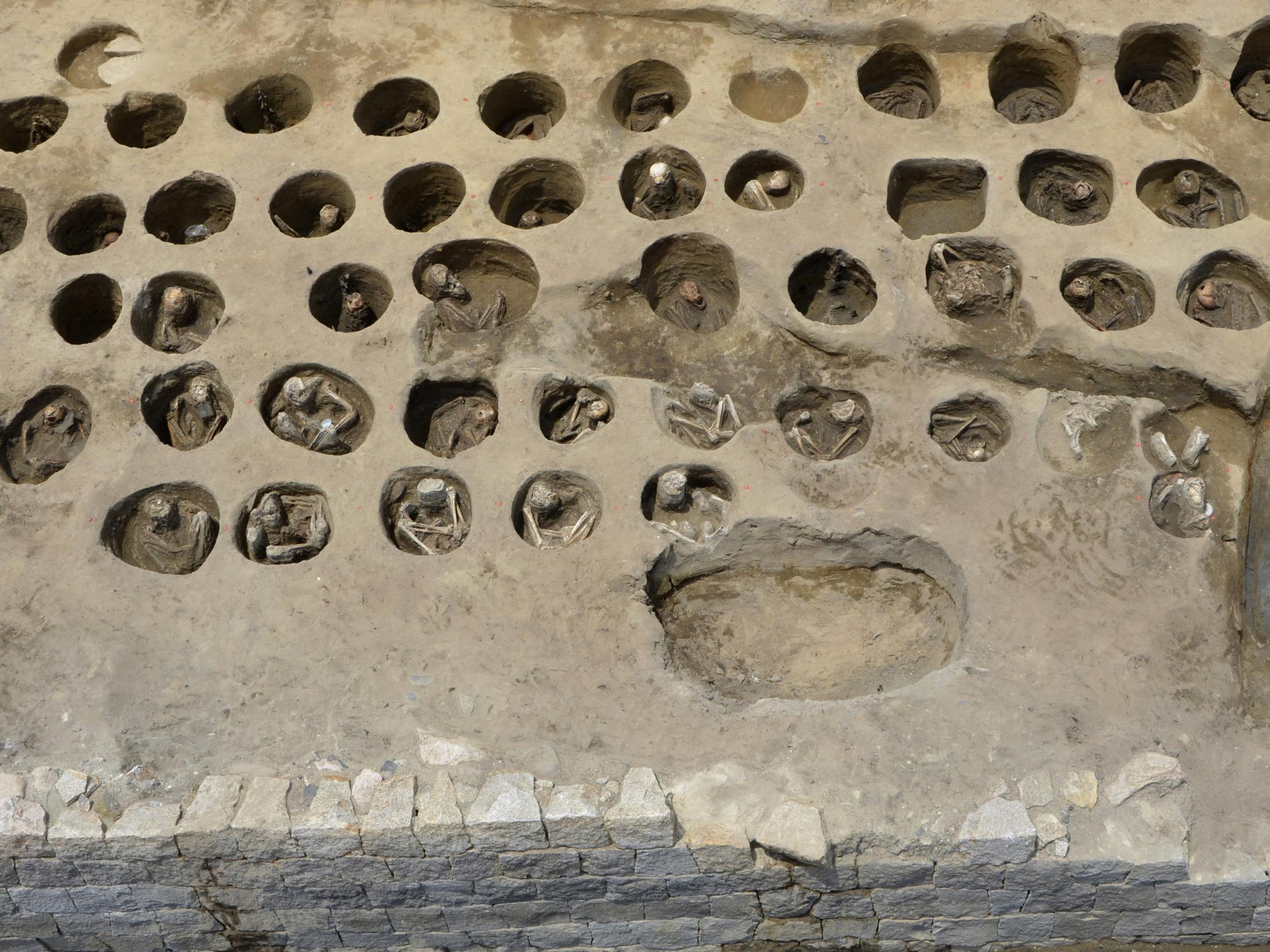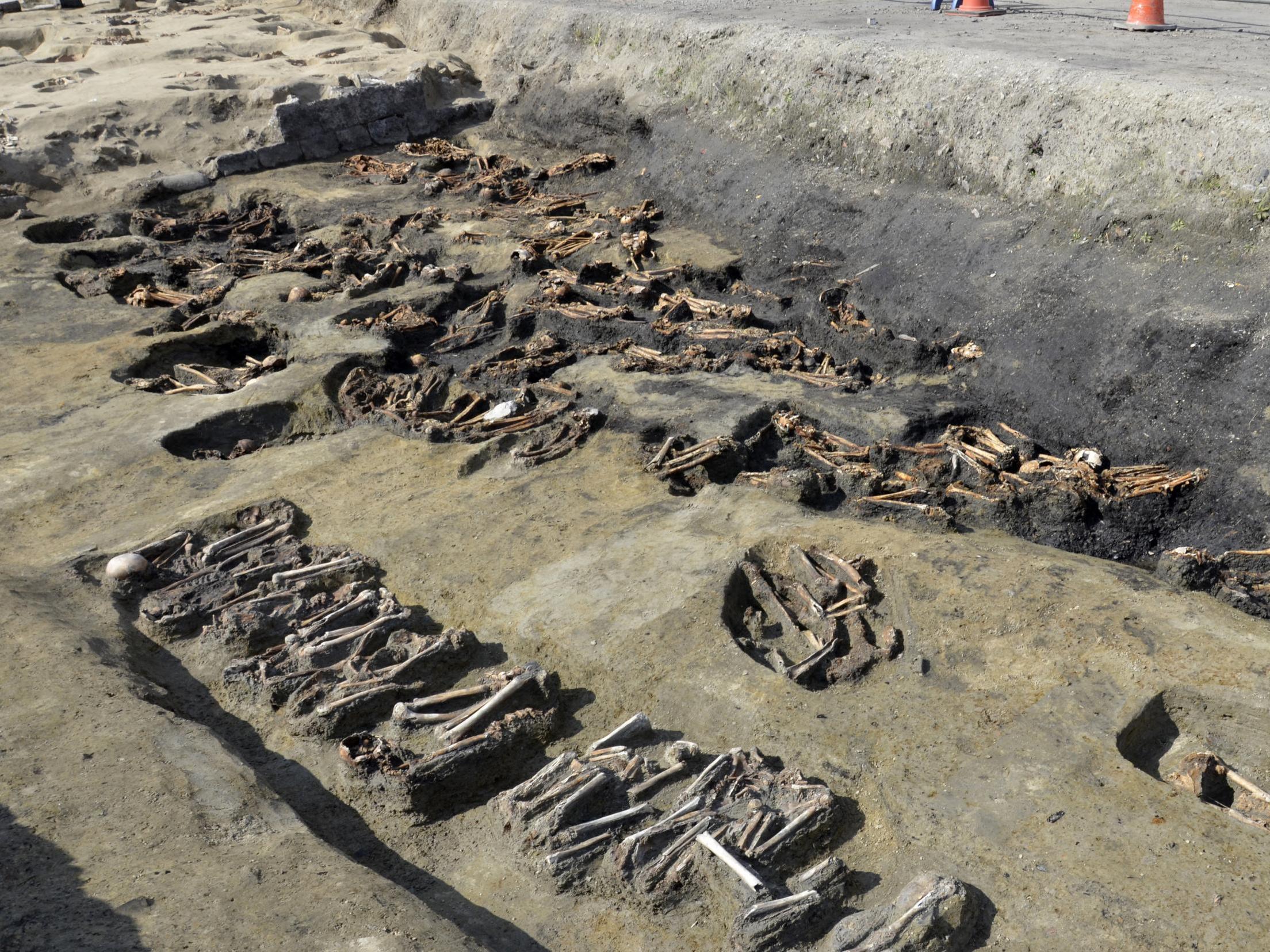Mass grave discovered in Japan with bodies buried in circular holes
Remains of more than 1,500 people found in 19th century mass grave believed to have died during epidemic

Your support helps us to tell the story
From reproductive rights to climate change to Big Tech, The Independent is on the ground when the story is developing. Whether it's investigating the financials of Elon Musk's pro-Trump PAC or producing our latest documentary, 'The A Word', which shines a light on the American women fighting for reproductive rights, we know how important it is to parse out the facts from the messaging.
At such a critical moment in US history, we need reporters on the ground. Your donation allows us to keep sending journalists to speak to both sides of the story.
The Independent is trusted by Americans across the entire political spectrum. And unlike many other quality news outlets, we choose not to lock Americans out of our reporting and analysis with paywalls. We believe quality journalism should be available to everyone, paid for by those who can afford it.
Your support makes all the difference.The remains of more than 1,500 people buried in a 19th-century mass grave have been discovered in western Japan.
The Umeda Grave was unearthed during excavations as part of a redevelopment plan near the main train station in the port city of Osaka.
Officials at the Osaka City Cultural Properties Association who are studying the remains said they believe they belong to young people who died in the late 1800s during an epidemic. The grave is also thought to contain the remains of piglets, horses, and cats.
The remains were found during the latest round of excavation, which started in September 2019, following an earlier study in 2016-17 that dug up hundreds of similar remains at adjacent locations, according to Yoji Hirata, an official at the association.
“It was our first historical discovery of a burial site in Osaka,” Mr Hirata said. “The findings will provide details of burial tradition of ordinary people back then.”

Many of the remains from the earlier excavation showed signs of lesions on their limbs.
The discovery of more similar remains suggests the burial site was used for those who fell victim to an epidemic in the region, Mr Hirata added.
Many were found in small round holes, where their bodies had apparently been stacked and buried.
Archaeologists found coffins containing multiple remains, a sign many victims of an epidemic were buried together, Mr Hirata said.

All of the body parts have been removed and experts will examine them and other artefacts found nearby in the hope of finding more details about the deaths.
Some experts have cited the possibility of an epidemic of syphilis, which was rampant then in populated areas such as Osaka.
Experts also found around 350 urns and a possible ossuary at the site - signs that bodies were cremated. They also unearthed coins, Buddhist prayer beads, headdresses, combs, sake cups and clay dolls that were believed to have been buried with the dead.
The remains of several piglets were buried in the north side of the cemetery, and two horses in the south, while those of cats were found in containers.
Mr Hirata said experts plan to compile their findings and analysis in a report expected at the end of next year.
The burial site is in what used to be a farming area outside of the urban community near Osaka Castle and was one of seven major cemeteries in the city. People used to tour around the cemeteries to pray for their ancestors during the mid-summer Bon season under the Buddhist tradition.
Additional reporting by agencies
Join our commenting forum
Join thought-provoking conversations, follow other Independent readers and see their replies
Comments